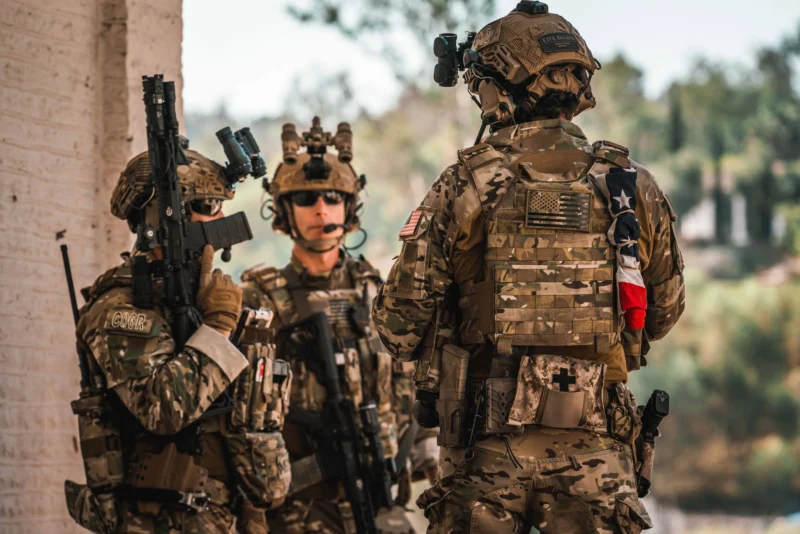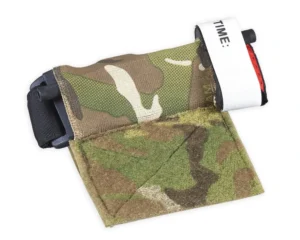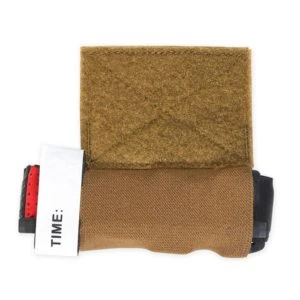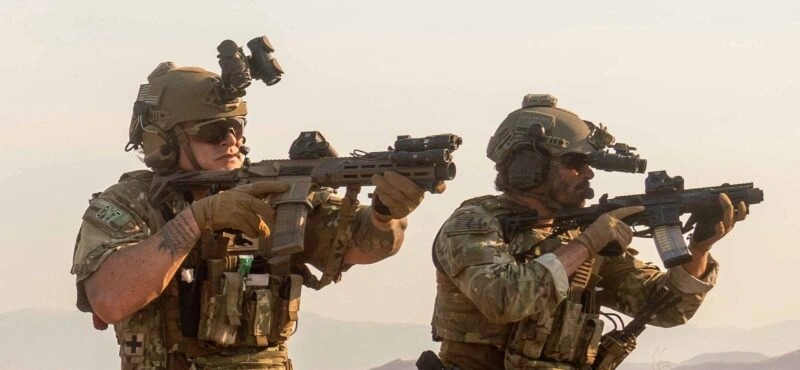The Importance of Having a Tourniquet in Tactical Emergencies

In high-risk environments where seconds can mean the difference between life and death, having the right tools on hand isn’t just smart, it’s mission-critical. Whether you’re on deployment, running tactical drills, or navigating the unpredictable terrain of a crisis, bleeding out is one of the most preventable causes of death. That’s where a tourniquet becomes more than just a piece of gear; it becomes a lifeline.
Combat-tested and field-proven, tourniquets have become an essential component in the kit of every soldier, first responder, law enforcement officer, and prepared civilian. However, owning one is only half the equation; understanding its purpose, function, and importance can mean saving a life, possibly your own. Secure your tourniquet for rapid deployment with the Chase Tactical Elastic Tourniquet Holder.

What is a Tourniquet and How Does it Work?
A tourniquet is a device used to apply pressure to an arm or leg to stop or limit blood flow. It’s typically used in cases of severe bleeding from traumatic injuries when direct pressure isn’t enough. By tightening the strap above the wound, a tourniquet compresses blood vessels, slowing blood loss until medical help arrives.
When Should You Use a Tourniquet?

Tourniquets are used when there’s life-threatening arterial bleeding that can’t be controlled by other means. This includes amputations, gunshot wounds, deep lacerations, or blast injuries. If blood is spurting or soaking through bandages quickly and the person is becoming pale or unresponsive, apply a tourniquet immediately instead of a bandage. Do this ideally within 60 to 90 seconds of the injury.
Are Tourniquets Safe to Use?
Modern tourniquets are safe for short-term use and more effective than previously thought. When used correctly in emergencies, they can stop bleeding and save lives with little long-term harm. However, improper use or leaving them on too long can cause problems. It’s important to be trained on when and how to use a tourniquet, as this knowledge can make a big difference.
Who Should Carry a Tourniquet?
Anyone operating in high-risk environments should carry a tourniquet. This includes military personnel, SWAT teams, EMTs, security contractors, hunters, and civilian preppers. Even everyday civilians, especially those who attend large public events or live in remote areas, can benefit from having one in their EDC or vehicle.
Importance of Having a Tourniquet in Emergencies
A tourniquet isn’t just a medical tool; it’s a force multiplier in tactical emergencies. It helps injured people survive by giving them a better chance and allowing time for medical help or evacuation.
Prevents Death from Hemorrhage
Uncontrolled bleeding is the leading cause of preventable death on the battlefield and in mass casualty incidents. A tourniquet can stop arterial bleeding within seconds, preventing shock and death long before professional medical help is available.
During military operations, soldiers and medics saved many lives by quickly using tourniquets under fire.
Helpful in Hostile or Remote Situations
In remote areas, active shooter scenarios, or combat zones, immediate evacuation isn’t always possible. Using a Chase Tactical Gen 7 tourniquet helps stabilize the injured person, allowing them to stay alive long enough for help or transportation. This is especially important when delays are expected.
In a firefight, medics may not be able to reach an injured teammate for several minutes. A self-applied tourniquet keeps the casualty alive until help arrives.
Enables Focus on the Mission

In the chaos of an emergency, stopping a teammate’s bleeding quickly with a tourniquet allows others to maintain focus on security, threats, or evacuation without being consumed by panic. It creates order in the storm.
Knowing that bleeding is under control lets team members move forward with clarity and confidence, rather than fear and distraction.
Increases Survivability in Mass Casualty Events
Whether it’s a terrorist attack, industrial accident, or natural disaster, multiple victims may need urgent care. Tourniquets make triage more efficient by controlling bleeding fast, freeing up medics to assist others.
In events like the Boston Marathon bombing, bystanders and first responders used tourniquets to save lives before ambulances could reach the scene.
Essential for Self-Rescue
Wearing a tourniquet within reach, on your tactical belt, vest, or chest rig, makes it possible to save your own life if wounded. Self-application has saved lives on the battlefield and in hunting accidents, motorcycle crashes, and workplace injuries.
Practicing one-handed application is critical. When one arm is injured, being able to apply the tourniquet with the other could be the difference between life and death.
Conclusion
A tourniquet isn’t just another item in your Individual First Aid Kit; it’s one of the most vital pieces of gear you can carry. When a tactical emergency strikes, and blood is pouring fast, time is not on your side. But a tourniquet can be. Whether you’re saving a brother-in-arms, a civilian, or yourself, the ability to control hemorrhaging is non-negotiable. Equip one, train with it, and never underestimate its value in a fight for survival.
Frequently Asked Questions
Can I use a belt or rope as a tourniquet?
Improvised tourniquets are often ineffective and dangerous. A purpose-built tourniquet is designed to apply targeted pressure safely and efficiently.
How long can a tourniquet stay on?
Generally, 2 hours is considered a safe duration. Always note the application time and seek medical attention as soon as possible.
What type of tourniquet is best?
Chase Tactical Combat Application Tourniquets (CAT), SOF-T, and SAM XT are trusted, field-tested options with widespread use in military and emergency services.
Should I carry more than one?
Yes, Multiple injuries or multiple casualties can require more than one tourniquet, and redundancy is critical in life-or-death scenarios.
Do tourniquets work on children?
Yes, but be cautious. Some commercial models may not be ideal for small limbs, so selecting the right one and providing proper training are essential.
